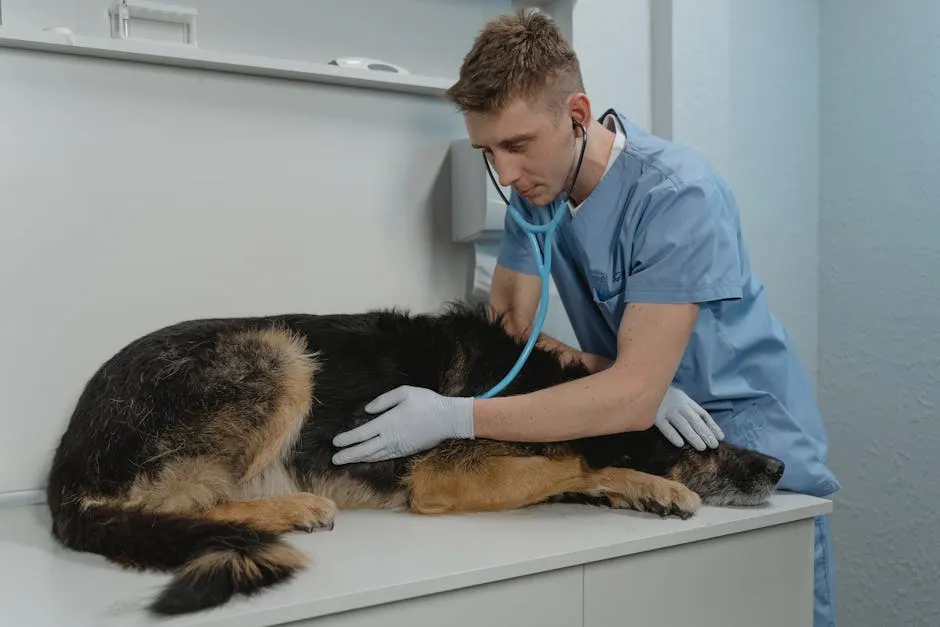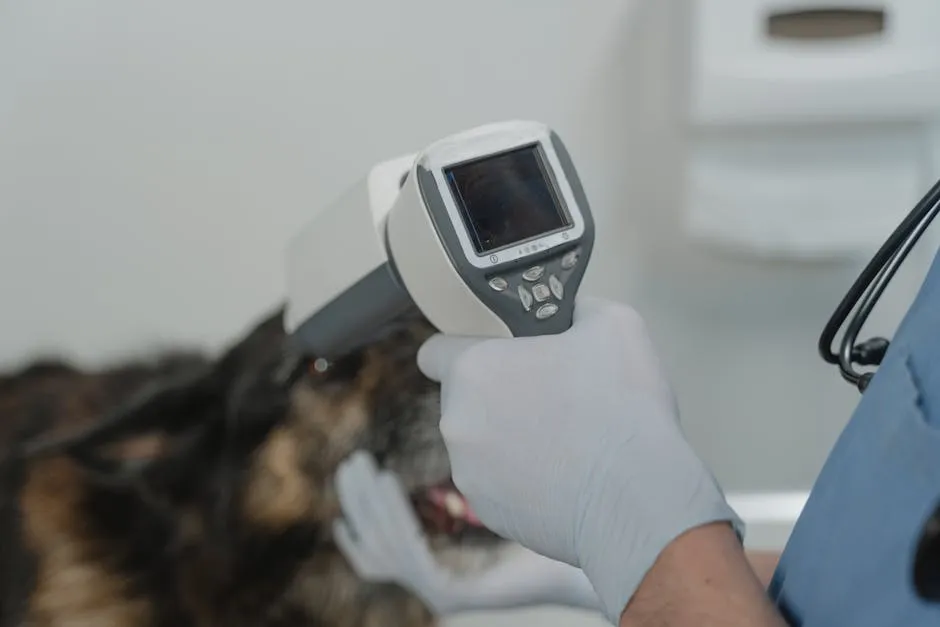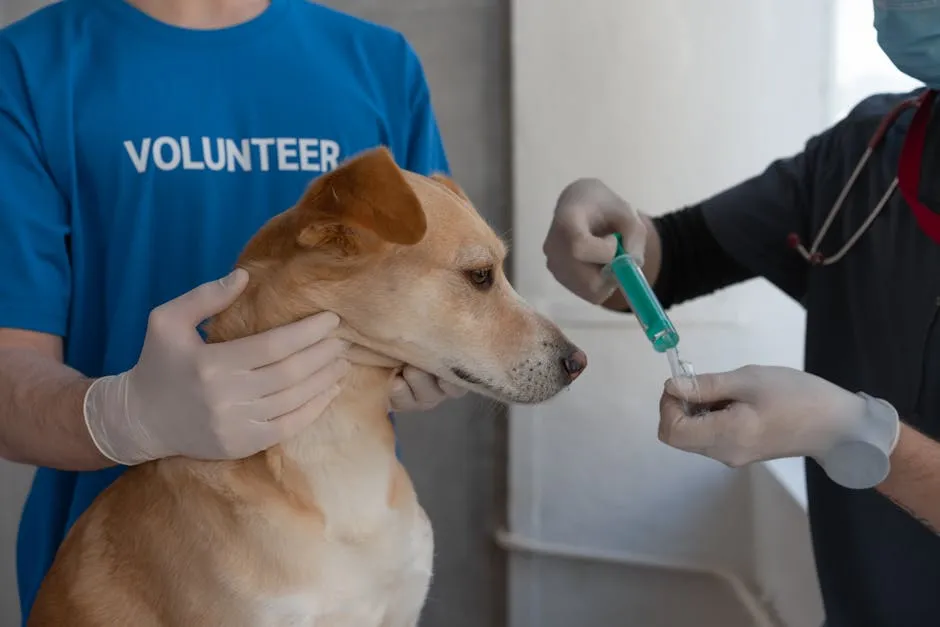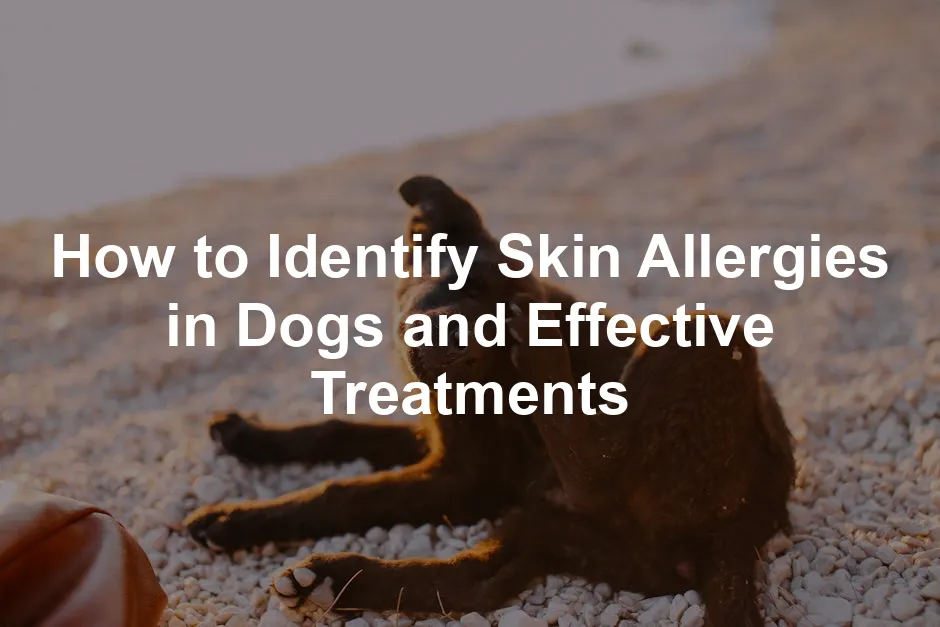Introduction
Skin allergies in dogs are quite common. Recognizing these allergies is crucial for your pet’s health. If left untreated, they can lead to discomfort and infections. Timely identification can significantly improve your dog’s quality of life. This article aims to guide you in identifying skin allergies in dogs and exploring effective treatment options.
Summary and Overview
Skin allergies occur when a dog’s immune system reacts to allergens. Common symptoms include itching, redness, and rashes. Understanding the causes helps in managing these allergies effectively. Consulting a veterinarian is essential for accurate diagnosis and treatment. This article covers various types of skin allergies, including environmental, food-related, and flea allergies.
Understanding Dog Skin Allergies
What Are Skin Allergies?
Skin allergies arise when the immune system reacts excessively to certain substances. These substances, known as allergens, can be found in food or the environment. In food allergies, symptoms might include skin irritation and digestive issues. Environmental allergies, on the other hand, often trigger reactions from pollen, dust, or mold. Knowing the difference between these types is vital for effective treatment.
If you notice your dog scratching or showing any signs of discomfort, take a moment to assess their symptoms. This could be the first step towards identifying a skin allergy and ensuring your dog receives the care they need.

Common Causes of Skin Allergies in Dogs
Skin allergies in dogs can arise from various sources. Understanding these causes is key to management and relief. The most common allergens include food, environmental factors, and flea bites.
Flea allergy dermatitis is one of the leading culprits. This condition occurs when a dog becomes allergic to proteins in flea saliva. Even a single flea bite can trigger intense itching and skin irritation. The affected areas often become inflamed, leading to scabs and hair loss. Consequently, regular flea prevention is essential for your dog’s well-being. You can ensure your dog is protected with PetArmor Plus Flea and Tick Prevention for Dogs. It’s a lifesaver when it comes to keeping those pesky fleas at bay!
Food sensitivities also play a significant role in skin allergies. Dogs can develop allergies to ingredients, even those they’ve consumed for years. Common offenders include beef, chicken, dairy, and grains. Symptoms may manifest as itchy skin, gastrointestinal distress, or chronic ear infections. Identifying food allergies often requires a special elimination diet to pinpoint the offending ingredient.
Environmental allergens like pollen, dust mites, and mold can trigger allergic reactions, too. These allergens are typically inhaled or absorbed through the skin. Seasonal changes can exacerbate the symptoms, making it crucial to monitor your dog’s reactions during specific times of the year.
Keeping a diary of your dog’s symptoms can help identify potential allergens. Note when reactions occur, along with any changes in diet or environment. This record will be invaluable in discussions with your veterinarian.

Signs and Symptoms of Skin Allergies
Identifying skin allergies in your dog can be challenging but essential for effective treatment. Common symptoms include itching, redness, and rashes. You might notice your dog scratching more than usual or licking specific areas excessively.
Itching, or pruritus, is often the first sign of an allergic reaction. This discomfort can lead to skin irritation and hot spots, which are painful, inflamed areas on the skin. You may also observe hair loss around the affected areas, which results from constant scratching or biting.
Behavioral changes can accompany these physical symptoms. Dogs may become restless, agitated, or even aggressive due to discomfort. Excessive grooming is another red flag. If you spot your dog constantly licking or chewing their paws, it’s time to take a closer look.
Additionally, keep an eye out for ear infections. Dogs with allergies often shake their heads or scratch at their ears. This can be a sign of underlying issues related to allergies, such as inflammation or infection. If you need to soothe your dog’s skin, consider using Vet’s Best Allergy Itch Relief Dog Shampoo. It’s formulated to alleviate itching and promote healing!
Monitoring your dog’s behavior and physical symptoms is critical for early detection. If you notice persistent signs of discomfort, consult your veterinarian for further evaluation and treatment options.

Areas of the Body Affected
When it comes to skin allergies in dogs, certain areas are more frequently affected. You might notice your furry friend scratching their ears, licking their paws, or rubbing their belly. These common hotspots can provide clues about the type of allergy your dog may have.
Let’s break it down a bit. If your dog is constantly scratching their ears, it could indicate an ear infection often linked to allergies. Likewise, if your pup is persistently licking their paws, this behavior can point to environmental allergens. Allergies often manifest in areas where your dog interacts with allergens, such as grass or dust.
The belly and groin are also vulnerable spots. Allergic reactions here might suggest food allergies or contact allergies from irritants. Similarly, if you observe redness or rashes in these areas, take note. These symptoms can lead to secondary infections if not addressed promptly.
Regularly examining your dog’s body for signs of irritation can make a huge difference in their comfort. By being vigilant, you can catch potential allergies early and help your furry friend feel their best.

Diagnosing Skin Allergies
When to Consult a Veterinarian
Seeking professional help for your dog’s skin allergies is crucial. While you can observe symptoms at home, a veterinarian can provide an accurate diagnosis. They have the expertise to determine the underlying cause of your dog’s discomfort.
If your dog shows persistent itching, redness, or rashes that don’t improve, it’s time to visit the vet. These symptoms can indicate more than just allergies; they might suggest infections or other skin conditions. Additionally, if your dog experiences chronic ear infections, this may also be a sign of underlying allergies.
Veterinarians may recommend skin tests or allergy testing to pinpoint specific allergens. These tests can help determine if your dog is reacting to environmental factors, food, or fleas. Early diagnosis is essential for effective treatment and relief from discomfort.
Remember, waiting too long can exacerbate the problem. If your dog’s symptoms persist or worsen, don’t hesitate to seek veterinary advice. Your furry friend deserves to feel comfortable and happy!

Diagnostic Methods
When it comes to identifying skin allergies in dogs, several diagnostic tests can help pinpoint the cause. Understanding these methods is crucial for effective treatment.
Blood tests are a common first step. Known as serological testing, they check for specific antibodies in your dog’s bloodstream. These tests can indicate potential environmental allergens. However, they may not provide a complete picture.
Intradermal testing is another option. This method involves injecting small amounts of allergens into the skin. Your veterinarian observes the reaction, which helps identify specific allergens. This test is often considered the gold standard for diagnosing environmental allergies.
An elimination diet is a vital tool for identifying food allergies. This process involves feeding your dog a special diet for a set period. It usually lasts 8 to 12 weeks and contains novel proteins and carbohydrates that your dog hasn’t eaten before. Gradually reintroducing other foods helps determine which ingredients cause reactions.
Each of these methods plays a role in the diagnostic process. They help clarify what’s triggering your dog’s discomfort, guiding the right treatment plan. Discussing these testing options with your veterinarian can lead to more effective management of your dog’s allergies.
Effective Treatments for Skin Allergies
Treating skin allergies in dogs requires a thoughtful approach tailored to the individual pet. Each dog may react differently based on the underlying cause of their allergies.
The first step is identifying the cause. Once you know what triggers your dog’s allergies, you can create a customized treatment plan. This plan may involve avoiding known allergens, which can significantly alleviate symptoms.
Medications play a crucial role in managing allergies. Antihistamines and corticosteroids are commonly prescribed to reduce itching and inflammation. However, your veterinarian may recommend other options depending on the severity of the condition.
In some cases, immunotherapy can be beneficial. This treatment involves gradually desensitizing your dog to specific allergens through injections. While it may take time to see results, many dogs benefit from this long-term approach. To support your dog’s immune system, consider adding NaturVet Aller-911 Allergy Aid Soft Chews for Dogs to their routine!
Regular check-ups with your veterinarian are essential to monitor your dog’s progress. They can adjust the treatment plan as needed to ensure your dog remains comfortable. By working together, you and your veterinarian can develop a plan that improves your dog’s quality of life while addressing their specific needs.

Medications and Therapies
Antihistamines and Corticosteroids
Antihistamines can provide relief from itching and discomfort in dogs. These medications work by blocking histamines, which cause allergic reactions. Common options include diphenhydramine and cetirizine. They are generally safe but may cause drowsiness in some pets.
Corticosteroids are another option for managing allergies. They reduce inflammation and provide quick relief from severe itching. However, long-term use can lead to side effects, such as increased thirst and weight gain. Always discuss these options with your vet to ensure the safest choice for your dog’s specific needs.
Before administering any medication, consulting with your veterinarian is crucial. They can recommend the best course of action and monitor your dog for any adverse effects. Your furry friend’s health is worth the extra step!

Alternative Therapies
In addition to traditional medications, alternative treatments can be beneficial for dogs with skin allergies. Medicated baths using special shampoos can soothe irritated skin and remove allergens. Look for products that contain oatmeal or aloe vera for maximum comfort. One great option is the TropiClean OxyMed Medicated Anti-Itch Shampoo for Dogs. It’s specifically designed to provide relief!
Omega fatty acids are another natural remedy. These supplements can improve skin health and reduce inflammation. They can be found in fish oil or flaxseed oil, both of which are easy to add to your dog’s diet. A top choice is Omega-3 Fish Oil for Dogs. It’s a fantastic way to enhance their diet!
Acupuncture is an intriguing option for some pet owners. This holistic approach targets specific points on your dog’s body to relieve symptoms and promote healing. While it may not work for every dog, many owners report positive results.
These alternative therapies can complement traditional treatments effectively. Always discuss these options with your veterinarian. They can help determine the best combination of therapies for your dog’s unique situation.

Conclusion
Identifying and treating skin allergies in dogs is essential for their well-being. Proactive monitoring and veterinary consultations can significantly improve your pet’s quality of life. By recognizing symptoms and implementing timely treatments, you can help your furry friend feel comfortable and happy again. Don’t hesitate to reach out to your vet if you have concerns about your dog’s skin health! And to keep your pup entertained, consider getting them a KONG Classic Dog Toy for endless fun!
For detailed insights on skin allergies in dogs, check out this comprehensive guide on how to recognize and treat common skin allergies in dogs.
Please let us know what you think about our content by leaving a comment down below!
Thank you for reading till here 🙂
All images from Pexels





